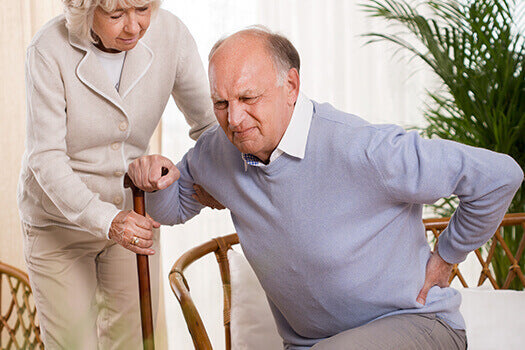As we age, back pain can become a common issue, affecting both our mobility and quality of life. Fortunately, regular exercise can play a crucial role in managing this discomfort. When practiced consistently, the right exercises alleviate back pain and strengthen the muscles that support the spine, preventing future injuries.
Pelvic Tilts: Enhancing Core Stability and Spinal Health
Pelvic tilts are a gentle yet powerful exercise designed to improve core stability and strengthen the muscles around your spine. A strong core helps maintain proper posture, reducing the strain on your lower back. Regularly performing pelvic tilts can improve spinal alignment and reduce pressure on your vertebrae, which is essential for easing back pain.
To perform this exercise, lie on your back with your knees bent and feet flat on the floor. Slowly tilt your pelvis upward, pressing your lower back into the ground. Hold the position for a few seconds, then release. Over time, this movement strengthens the core muscles, helping you maintain better posture and alleviate chronic lower back pain.
Bird Dog: Building Strength for Better Balance and Posture
The bird dog exercise is highly effective in strengthening both the core and back muscles, improving overall balance and stability. These muscles play a key role in maintaining proper posture and reducing the likelihood of back injuries. Additionally, the bird dog exercise promotes coordination, which is especially important for seniors in preventing falls.
To do this exercise, begin on all fours. Extend your right arm forward and your left leg backward while keeping your spine straight. Hold the position for a few seconds before switching sides. By engaging your core and back in this balanced position, you’re helping to stabilize your spine and improve muscle control. Over time, this exercise helps reduce back pain by improving the strength and endurance of the muscles that support your spine.
Bridge Pose: Strengthening Your Lower Back and Hips
Bridge pose is another beneficial exercise for relieving back pain. This movement engages your glutes, hamstrings, and lower back muscles, essential for supporting your spine. Strengthening these muscles can significantly reduce the pressure on the spine, making it easier to maintain good posture and avoid back strain.
To perform the bridge pose, lie on your back with your knees bent and feet hip-width apart. Press your feet into the floor and lift your hips, forming a straight line from your knees to your shoulders. Hold for a few seconds before lowering back down. Consistent practice of this exercise strengthens the muscles that support your lower back, helping alleviate pain caused by muscle weakness or strain.
Cat-Cow Stretch: Improving Flexibility and Relieving Tension
The cat-cow stretch is a fluid movement that enhances spinal flexibility and helps relieve tension in the back. This stretch is particularly useful for seniors who experience stiffness in their spine due to age-related degeneration. By regularly performing the cat-cow stretch, you can increase the range of motion in your spine and reduce stiffness that often leads to discomfort.
Begin this exercise on all fours. You'll stretch and engage the muscles along your spine as you arch your back upward (cat pose). Then, as you lower your back and lift your head (cow pose), you promote better spinal alignment and flexibility. This gentle movement is ideal for loosening tight muscles and improving circulation, easing back pain, and preventing stiffness.
Seated Spinal Twist: Promoting Spinal Mobility and Easing Tension
The seated spinal twist is a simple but effective way to increase spinal mobility and stretch the muscles in your back. Twisting exercises like this one help promote spinal alignment and relieve tension in the lower back, making them highly beneficial for seniors dealing with back discomfort.
To perform the seated spinal twist, extend your legs and bend your right knee, crossing it over your left leg. Gently twist your torso to the right, using your left arm for support. Hold for 30 seconds, then switch sides. This movement helps reduce stiffness in the spine and encourages better posture, which can prevent and alleviate lower back pain.
Why Regular Exercise Matters for Back Health
Regular exercise is crucial in preventing and managing back pain, especially for seniors. Strengthening core and back muscles provides better support to the spine, reducing the risk of strain and injury. Additionally, exercises that promote flexibility help keep the spine mobile, preventing stiffness that can lead to discomfort.
Maintaining a healthy weight through exercise also reduces the load on the spine, further protecting against back pain. Finally, improving posture through pelvic tilts and bridge poses helps keep the spine properly aligned, reducing strain and the likelihood of developing chronic back pain.
Taking Control of Your Back Health
Incorporating these exercises into your daily routine can help you manage and reduce back pain while also improving your overall spinal health. Start slowly and consult a healthcare provider if you experience any discomfort during exercise. With regular practice, you’ll build stronger muscles, improve flexibility, and regain control over your mobility, making back pain a thing of the past.

